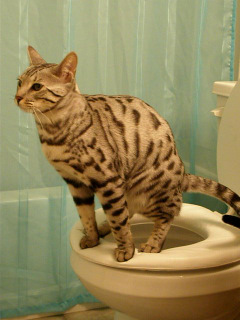Why You Mustn't Flush Cat Poop Down Your Toilet - Preserve Your Plumbing Health
Why You Mustn't Flush Cat Poop Down Your Toilet - Preserve Your Plumbing Health
Blog Article
What're your thoughts with regards to How to Dispose of Cat Poop and Litter Without Plastic Bags?

Introduction
As pet cat proprietors, it's important to bear in mind just how we take care of our feline good friends' waste. While it might appear hassle-free to flush feline poop down the toilet, this practice can have damaging repercussions for both the environment and human health and wellness.
Alternatives to Flushing
The good news is, there are much safer and much more accountable means to get rid of cat poop. Consider the following options:
1. Scoop and Dispose in Trash
The most usual technique of throwing away feline poop is to scoop it into a biodegradable bag and toss it in the trash. Be sure to utilize a committed trash inside story and get rid of the waste promptly.
2. Use Biodegradable Litter
Go with naturally degradable cat litter made from materials such as corn or wheat. These clutters are environmentally friendly and can be safely gotten rid of in the garbage.
3. Hide in the Yard
If you have a yard, consider burying feline waste in an assigned location far from veggie yards and water resources. Make sure to dig deep adequate to stop contamination of groundwater.
4. Set Up a Pet Waste Disposal System
Buy a pet dog waste disposal system especially created for feline waste. These systems utilize enzymes to break down the waste, minimizing odor and ecological effect.
Health and wellness Risks
In addition to environmental problems, purging cat waste can also present wellness threats to human beings. Cat feces may consist of Toxoplasma gondii, a bloodsucker that can trigger toxoplasmosis-- a possibly extreme health problem, specifically for pregnant ladies and people with damaged immune systems.
Environmental Impact
Purging pet cat poop introduces dangerous pathogens and parasites into the water supply, positioning a considerable danger to aquatic ecosystems. These impurities can adversely impact marine life and compromise water top quality.
Conclusion
Responsible pet dog possession prolongs beyond providing food and sanctuary-- it also entails proper waste monitoring. By avoiding flushing pet cat poop down the commode and choosing different disposal techniques, we can reduce our environmental impact and shield human health.
Why Can’t I Flush Cat Poop?
It Spreads a Parasite
Cats are frequently infected with a parasite called toxoplasma gondii. The parasite causes an infection called toxoplasmosis. It is usually harmless to cats. The parasite only uses cat poop as a host for its eggs. Otherwise, the cat’s immune system usually keeps the infection at low enough levels to maintain its own health. But it does not stop the develop of eggs. These eggs are tiny and surprisingly tough. They may survive for a year before they begin to grow. But that’s the problem.
Our wastewater system is not designed to deal with toxoplasmosis eggs. Instead, most eggs will flush from your toilet into sewers and wastewater management plants. After the sewage is treated for many other harmful things in it, it is typically released into local rivers, lakes, or oceans. Here, the toxoplasmosis eggs can find new hosts, including starfish, crabs, otters, and many other wildlife. For many, this is a significant risk to their health. Toxoplasmosis can also end up infecting water sources that are important for agriculture, which means our deer, pigs, and sheep can get infected too.
Is There Risk to Humans?
There can be a risk to human life from flushing cat poop down the toilet. If you do so, the parasites from your cat’s poop can end up in shellfish, game animals, or livestock. If this meat is then served raw or undercooked, the people who eat it can get sick.
In fact, according to the CDC, 40 million people in the United States are infected with toxoplasma gondii. They get it from exposure to infected seafood, or from some kind of cat poop contamination, like drinking from a stream that is contaminated or touching anything that has come into contact with cat poop. That includes just cleaning a cat litter box.
Most people who get infected with these parasites will not develop any symptoms. However, for pregnant women or for those with compromised immune systems, the parasite can cause severe health problems.
How to Handle Cat Poop
The best way to handle cat poop is actually to clean the box more often. The eggs that the parasite sheds will not become active until one to five days after the cat poops. That means that if you clean daily, you’re much less likely to come into direct contact with infectious eggs.
That said, always dispose of cat poop in the garbage and not down the toilet. Wash your hands before and after you clean the litter box, and bring the bag of poop right outside to your garbage bins.
https://trenchlesssolutionsusa.com/why-cant-i-flush-cat-poop/

As a fervent person who reads on Can You Flush Cat Poop Down The Toilet?, I was thinking sharing that excerpt was really useful. If you please set aside a second to share this article if you liked it. I praise you for your time. Don't forget to check up our blog back soon.
Call Today Report this page